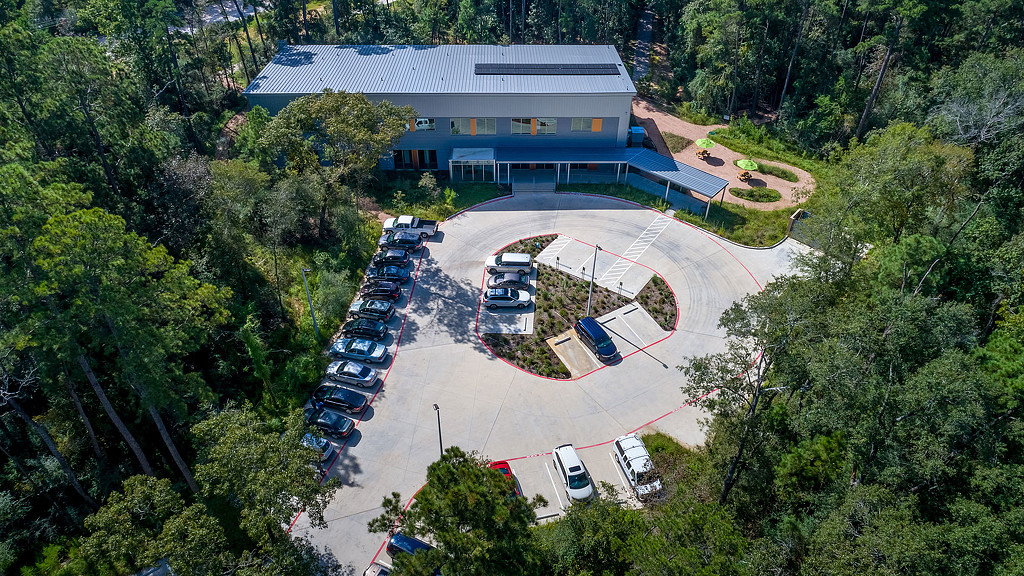What We Can Learn From the Texas Weather Crisis About Design Resilience
February 26, 2021 | By Rives Taylor
The recent arctic freeze that struck Texas immobilized the entire state, as 30% of the state’s capacity to generate power buckled, leaving well over 4 million Texans in the dark and in frigid temperatures when the storm was at its worst, leaving many without power, heat, and water. The state’s infrastructure system was adversely impacted concurrently — including workplaces, hospitals, transportation, homes, drinking water distribution, electric power generation, agriculture, and grocery stores.
These power losses and freezing temperatures led to a cascading effect in water infrastructure, with approximately 12 million people — more than 40% of the state’s population — experiencing disruption to potable water. Beyond the storm’s impact upon infrastructure, there is also an untold direct and indirect human impact, including death from exposure, carbon monoxide poisoning, and home healthcare devices that ran out of power.
The Insurance Council of Texas warned that this winter storm could result in the most extensive insurance claims and history of the state. Since 2010, Texas has experienced $68 billion in losses as a result of climate-related disasters, and a great deal of that cost is due to business interruption. Many businesses do not carry business interruption insurance. Massive insurance claims drive up future coverage costs, or lead to insurance challenges, as in California after the Loma Prieta earthquake. In Europe, building project financing and insurability increasingly requires projects to prove that they are designed and will be constructed to adapt to the increasing impacts of climate change.
Some in the state leadership blamed the over reliance on renewable wind power sources or future green power plans; however, solar and wind energy make up just a fraction of Texas’ energy supply, particularly in the winter. Instead, the state’s widespread electricity failure was largely caused by freezing natural gas infrastructure, coupled with a surge in demand.
Designing more resilient infrastructureThe state of Texas is an electricity kingdom to itself — a stand-alone electricity grid, with normally plenty of natural gas (and yes, coal and nuclear) to drive the turbines. This entire energy market is driven by a partly deregulated entrepreneurial market with apparently little cross-state coordination. The deep freeze drove this balance of market forces, with power plants and water pumps frozen. The New York Times pointed out that this is just an indicator of how brittle our energy and water distribution systems are across the country.
The question becomes: what can we learn from this crisis about designing more resilient structures, cities, and infrastructure in general?
The rolling blackouts and water shortages in Texas, spurred by soaring demand that strained the state’s electrical grid and water lines, serve as a reminder of the country’s brittle infrastructure and the critical importance of dependable power and water infrastructure in an aging urban realm. We need to look to energy-efficient buildings, low-impact materials, and all-electric facilities with renewable power sources to alleviate demand on the grid and, ultimately, to achieve a net zero carbon future.
At Gensler, our focus on resilience addresses both minimizing the human and environmental impacts of our designs, as well as mitigating the current climatic challenges to the urban quality of life. As extreme weather and climate-related events increase, our design approach must purposely evolve, adapting to and preparing for a changing world.
Here are six design strategies we can use to achieve climate resilience:
1. Consider resilience across different scales.Resilience has multiple impacts delivered at different scales, from homes, offices, or schools, to neighborhoods and cities. We can’t separate response to climate from the response to maintain the continuity of our communities or the quality of human experience. It’s this integrated design approach that delivers long-term and resilient urban responses.
To be resilient on an individual or an organization level, and to have some level of control when basic services fail, we must have energy and water independence during a time of crisis. To reduce the stress on our city’s grids, we need to implement passive strategies that leverage gravity, daylight, good insulation, passive ventilation, and more. We need to reduce the stress on our city’s grid, as well as our own on-site energy needs.
Next generation photovoltaics have the potential to harness energy in low light and even from indoor light sources. These photovoltaics, coupled with flexible electronics, can be seamlessly integrated at any scale, ranging from a small device to an entire building.
2. Build or make new only when needed.Reusing an existing building or interior space is almost invariably better for the environment than tearing one down and building new; and the same is true for saving an office chair or reusing other materials. Prioritizing material and building reuse in projects whenever possible can dramatically lower the carbon impact of the built environment. For UPCycle, a dilapidated warehouse in Austin, Texas, repositioned into a creative office space, 95% of the existing structure was reused and around 1,824 metric tons of CO2 were saved through the process of reusing and reclaiming existing materials.
3. Build only as much as you need.Smaller buildings and spaces use less materials to create, and less energy and resources to operate and maintain. It’s critical that all stakeholders work together to pursue right-sizing and efficiency strategies — balancing this with a continued focus on creating places that offer a great experience for people.
We learned in Texas that too many rooms to heat or cool or too many sinks to keep dripping draw down our now limited resources too quickly, resulting in dangerously low energy supply and water levels. To reduce the strain on the power grid and our water lines, we can embrace energy efficient mechanical systems, lighting, and appliances. Just the reduction of a few degrees on our thermostat can greatly reduce the strain on the grid. High-performance energy-efficient glazing systems can also reduce heat gain/loss. While a significant amount of water pipes burst during the recent Texas storm, this happened less in homes that had good insulation in their attics.
4. Use low impact, low-carbon materials.The new materials, furniture, and fixtures we specify on a daily basis each come with an environmental and carbon cost — but those costs are far from equal. Prioritizing low-impact materials across all projects, and continuing to invest in new methods and resources can help reduce the embodied carbon impact of materials. By sourcing local materials, we can reduce the long-distance logistics for repair, repositioning, or replacement. It’s important to select low-carbon materials as well. Well-insulated homes provided added protection from the cold during the recent Texas power outages. To reduce embodied carbon, use insulation that has a low GWP (Global Warming Potential).
5. Pursue efficiency strategies from day one.The biggest impact that can be made on any project is at the beginning — from sourcing locally, to prioritizing passive design strategies, to building performance and efficiency targets into projects from the outset. If we design energy-efficient buildings and complement them with renewables, we can use less energy and decrease the demand on the electric grid.
The Houston Advanced Research Center, completed in 2017, survived recent Houston area floods, and continued operations uninterrupted due to 100% on-site heating, cooling, ventilation, and power from a rooftop PV array. The project was built 10% below the market-rate construction cost, and the performance results equate to 76% in energy reduction and net-positive energy — a significant cost savings.
6. Work with climate and context.Operationally net zero or net positive projects are just the start — ultimately, the most sustainable and resilient design solutions are those that work with local climate and context, creating economic, social, and environmental resilience — and increasing longevity through adaptable and flexible solutions. It’s important to design to local climate and understand how cultural conditions might impact the lifecycle operations.
In Texas, we concurrently need to address urban heat island and subsequent tropical storms flood waters. Thermal shock impacts the way we design our building envelopes and how we rely on an aging electrical grid and water system. It’s important to understand what materials belong in a local climate. In Texas, for example, our designers are developing new building envelope materials and assemblies that can be durable enough to withstand extreme temperature shocks.
The recent crisis in Texas is a wake-up call for climate action. The climate events of the past few years drive home that we must make changes in the way we design, build, and use spaces and buildings, putting people-first design at the center of the equation.
For media inquiries, email .

